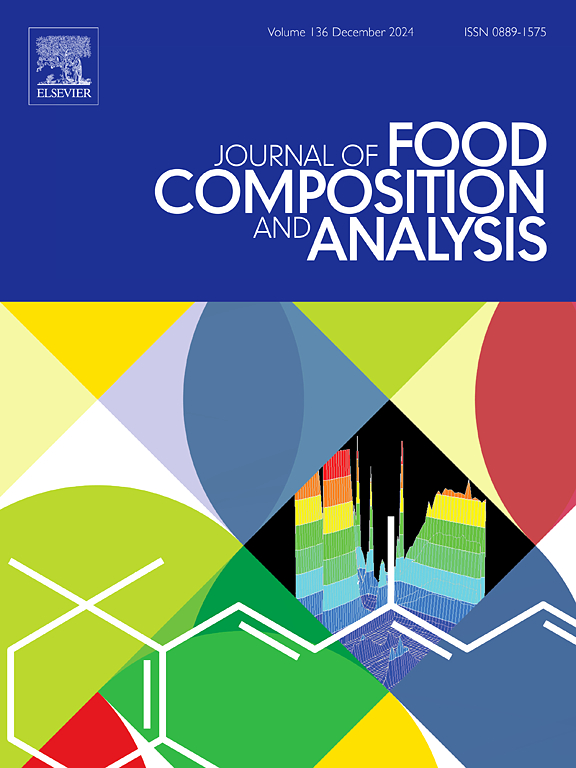A method for constructing optical detection model of wheat seed purity based on sample generation and contrastive learning strategy
IF 4.6
2区 农林科学
Q2 CHEMISTRY, APPLIED
引用次数: 0
Abstract
Seed purity is an essential indicator of seed quality, and use of optical techniques for seed purity testing has been extensively reported. Currently, most optical detection models for seed purity rely on the assumptions that the training set used to develop detection model contains all possible impurity varieties, and that the number of positive (the variety of interest) and negative samples (all possible impurities contained in that variety) in the training set is balanced. This assumption is often difficult to fulfil in practice due to the complexity of the seed production process. To address this issue, an optical detection model construction method for wheat seed purity based on sample generation and contrastive learning strategy was proposed in this study. The proposed method firstly employed a linear generation strategy to expand the impurity samples in training set, thus enhancing the diversity of impurity samples and improving the unbalance between the positive and negative samples. Thereafter, the contrastive learning loss function was introduced to train the optical detection model based on the deep convolutional neural network, so as to enhance the feature differences between positive and negative samples, and to improve the model's recognition accuracy for unknown impurity samples. Hyperspectral images of 4200 wheat seeds from six varieties were acquired, and a purity detection model for each variety was built by using the average spectra of the seed as input. The proposed method achieved average accuracy of 95.33 %, with improvements of 21.18 % over SVDD (78.67 %), 12.13 % over LSSVM (85.02 %), and 13.06 % over CNN (84.2 %), respectively. Further studies shown that the proposed method still maintains good detection accuracy under the condition that the test set contains multiply unknown impurities. The proposed method provides a feasible way for the construction of an optical detection model for seed purity in a real scenario.
一种基于样本生成和对比学习策略的小麦种子纯度光学检测模型构建方法
种子纯度是种子质量的重要指标,利用光学技术检测种子纯度已被广泛报道。目前,大多数种子纯度的光学检测模型都依赖于这样的假设:用于开发检测模型的训练集包含所有可能的杂质品种,并且训练集中的正样本(感兴趣的品种)和负样本(该品种中包含的所有可能的杂质)的数量是平衡的。由于种子生产过程的复杂性,这种假设在实践中往往难以实现。针对这一问题,本研究提出了一种基于样本生成和对比学习策略的小麦种子纯度光学检测模型构建方法。该方法首先采用线性生成策略对训练集中的杂质样本进行扩展,增强了杂质样本的多样性,改善了正负样本之间的不平衡性。随后,引入对比学习损失函数对基于深度卷积神经网络的光学检测模型进行训练,增强正负样本之间的特征差异,提高模型对未知杂质样本的识别精度。获取6个小麦品种4200颗种子的高光谱图像,以种子的平均光谱为输入,建立了每个品种的纯度检测模型。该方法的平均准确率为95.33 %,比SVDD(78.67 %)提高21.18 %,比LSSVM(85.02 %)提高12.13 %,比CNN(84.2 %)提高13.06 %。进一步的研究表明,在测试集含有多个未知杂质的情况下,该方法仍然保持较好的检测精度。该方法为构建种子纯度光学检测模型提供了一种可行的方法。
本文章由计算机程序翻译,如有差异,请以英文原文为准。
求助全文
约1分钟内获得全文
求助全文
来源期刊

Journal of Food Composition and Analysis
工程技术-食品科技
CiteScore
6.20
自引率
11.60%
发文量
601
审稿时长
53 days
期刊介绍:
The Journal of Food Composition and Analysis publishes manuscripts on scientific aspects of data on the chemical composition of human foods, with particular emphasis on actual data on composition of foods; analytical methods; studies on the manipulation, storage, distribution and use of food composition data; and studies on the statistics, use and distribution of such data and data systems. The Journal''s basis is nutrient composition, with increasing emphasis on bioactive non-nutrient and anti-nutrient components. Papers must provide sufficient description of the food samples, analytical methods, quality control procedures and statistical treatments of the data to permit the end users of the food composition data to evaluate the appropriateness of such data in their projects.
The Journal does not publish papers on: microbiological compounds; sensory quality; aromatics/volatiles in food and wine; essential oils; organoleptic characteristics of food; physical properties; or clinical papers and pharmacology-related papers.
 求助内容:
求助内容: 应助结果提醒方式:
应助结果提醒方式:


